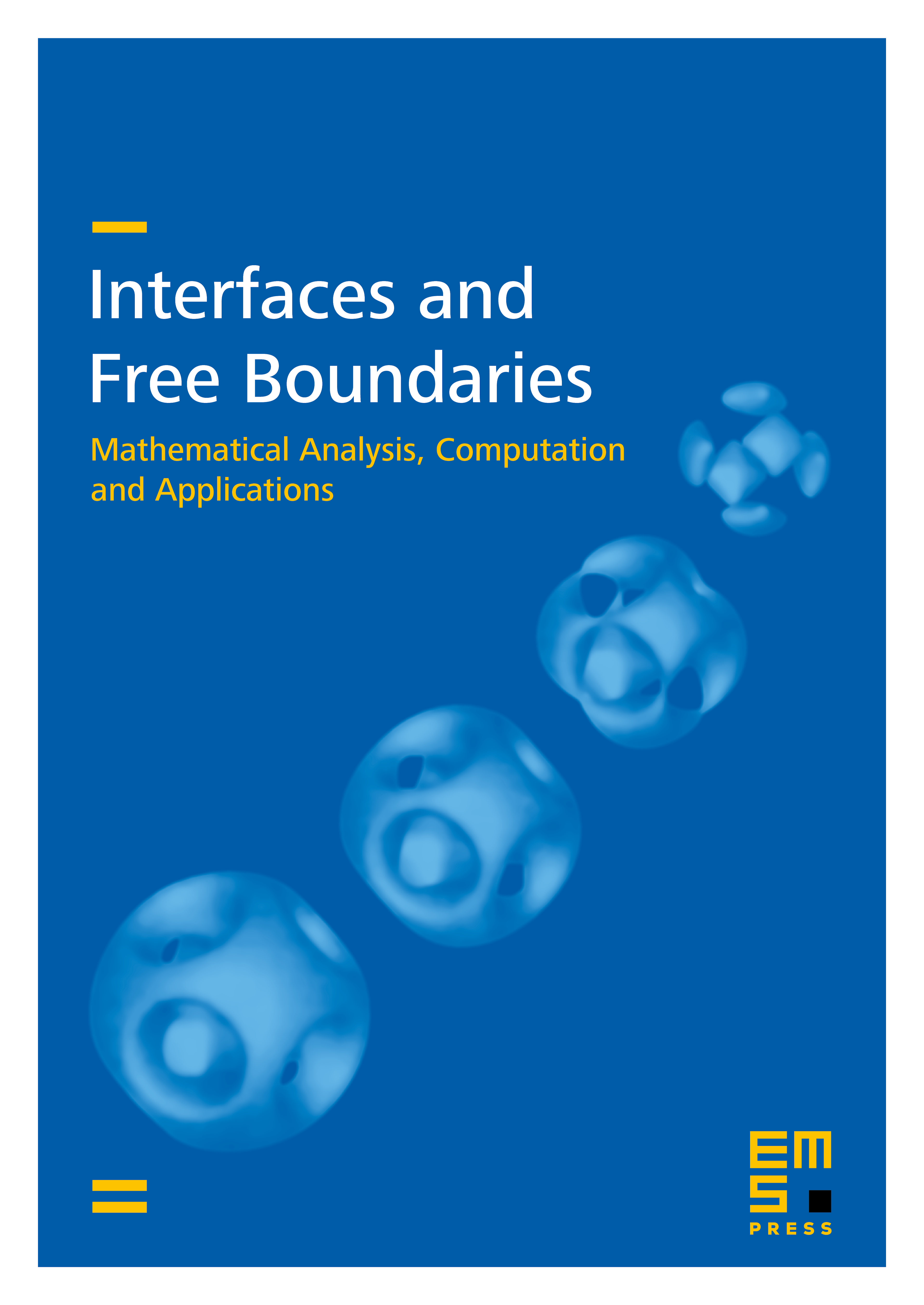A free-boundary model for diffusion-induced grain boundary motion
Paul C. Fife
University of Utah, Salt Lake City, USAJohn W. Cahn
National Institute of Standards and Technology, Gaithersburg, USACharles M. Elliott
University of Warwick, Coventry, UK

Abstract
On the basis of a phase field model previously proposed in Cahn et al. (Acta Mater. 45, 4397-4413 (1997)) to describe the phenomenon of diffusion-induced grain boundary motion (DIGM), we present a formal asymptotic reduction to a moving free-boundary problem. This problem is one of enhanced motion by curvature. The enhancement depends on the local concentration jump, across the grain boundary, of a solute species that is diffusing along the boundary. The reduction depends on the material diffusivity vanishing outside the grain boundary; this also introduces important mathematical and conceptual difficulties which are addressed in detail. A rigorous theory is given for two-dimensional solutions of the free-boundary problem when there is steady motion of the grain boundary spanning a plate from face to face, solute being supplied at the faces of the plate. The motion is in the direction parallel to the face. This situation represents well known experiments designed to illustrate DIGM. The corresponding theory is also given for grain boundaries which do not span the plate, but rather trail behind the moving intersection with one of the faces, never reaching the other one.
Cite this article
Paul C. Fife, John W. Cahn, Charles M. Elliott, A free-boundary model for diffusion-induced grain boundary motion. Interfaces Free Bound. 3 (2001), no. 3, pp. 291–336
DOI 10.4171/IFB/42